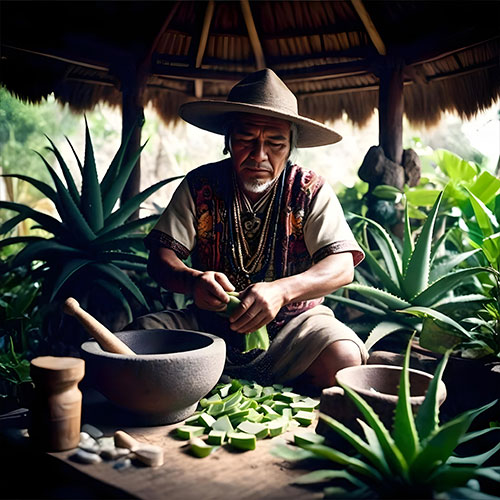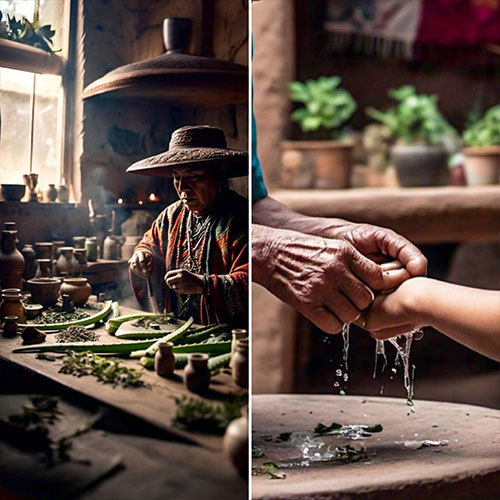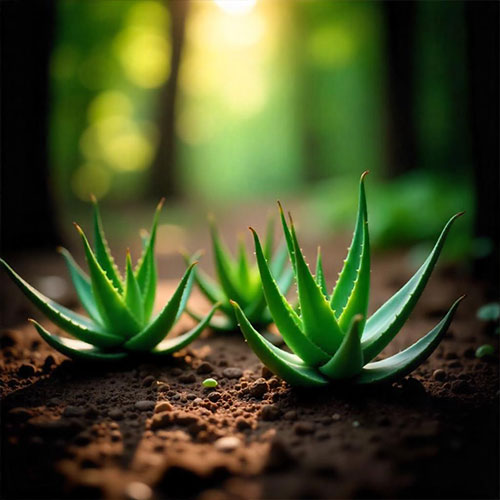






Aloe vera, often referred to as the "plant of immortality," has been a symbol of healing across many cultures. Its introduction to Mexico in the 16th century sparked a deep connection with the land and its people, blending seamlessly into the traditional practices of ancient civilizations like the Mayans and Aztecs. Over centuries, aloe vera has remained a cornerstone of Mexican health traditions, showcasing the enduring relevance of this versatile plant.
In the 16th century, European explorers and traders brought aloe vera to the Americas, recognizing its potential as a healing plant. Mexico, with its favorable tropical and subtropical climates, provided the perfect conditions for aloe vera to flourish. The indigenous peoples of Mexico, known for their profound understanding of natural medicine, were quick to adopt aloe vera into their traditions, appreciating its soothing properties.
The Mayans and Aztecs, among the most advanced ancient civilizations in the Americas, held a deep respect for nature and its ability to heal. Aloe vera was embraced for its medicinal value, becoming a common feature in their surroundings. The plant was often cultivated near temples and homes, symbolizing both physical and spiritual healing.
For the Mayans, aloe vera gel was used in various rituals and as a remedy for ailments like burns, wounds, and skin irritations. Similarly, the Aztecs incorporated aloe vera into their herbal medicine practices, blending it with other native plants to enhance its efficacy.
Aloe vera became an integral part of traditional Mexican medicine, especially among healers who relied on natural remedies. Its gel was extracted and used in numerous ways:
Healers would often grind aloe vera leaves into a paste using stone mortars, combining it with other herbs to create powerful remedies for a variety of ailments.
Aloe vera was rarely used in isolation. The plant's gel was often mixed with other native herbs like chamomile, oregano, and guava leaves to create potent medicinal concoctions. These mixtures were applied to burns, wounds, and rashes, or ingested to alleviate digestive discomfort and inflammation. Such combinations reflected the holistic approach of ancient Mexican medicine, which prioritized balance and harmony in health practices.
From its ancient roots, aloe vera has seamlessly transitioned into the modern world. Today, it is a key ingredient in skincare products, health drinks, and wellness regimens across Mexico. Spas and wellness centers prominently feature aloe vera in treatments, while traditional markets continue to sell fresh aloe leaves for home remedies.
This enduring legacy highlights the timeless appeal of aloe vera, bridging the wisdom of the Mayans and Aztecs with contemporary health and wellness trends.
The journey of aloe vera in Mexico is a testament to the plant's adaptability and enduring relevance. From its introduction by European traders to its integration into the traditions of the Mayans and Aztecs, aloe vera has become deeply embedded in Mexican culture. Whether in ancient rituals or modern skincare routines, aloe vera continues to symbolize healing, resilience, and the connection between humans and nature.
This story not only celebrates aloe vera’s legacy but also reminds us of the importance of preserving and honoring traditional knowledge in our pursuit of modern wellness.
Coming Up Next: A Journey to India!
Dive into the story of how aloe vera made its way to the rich and diverse lands of India. In this chapter, we’ll explore how this extraordinary plant became deeply rooted in India’s traditional practices, from ancient Ayurveda to modern wellness. Get ready to uncover aloe vera’s incredible journey and its lasting impact on Indian culture!